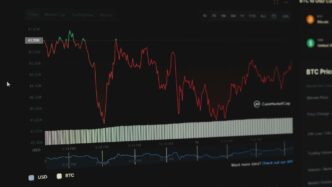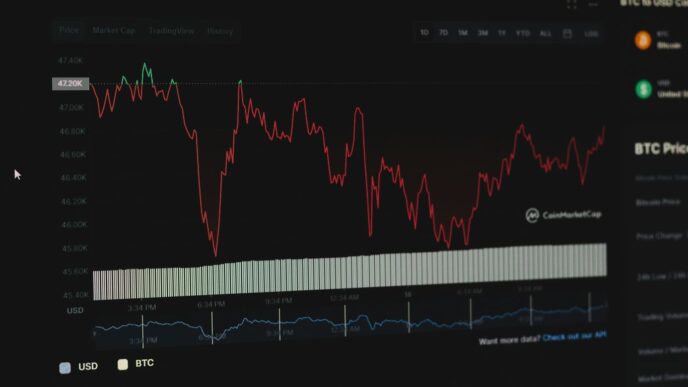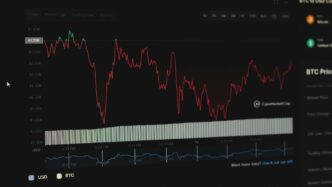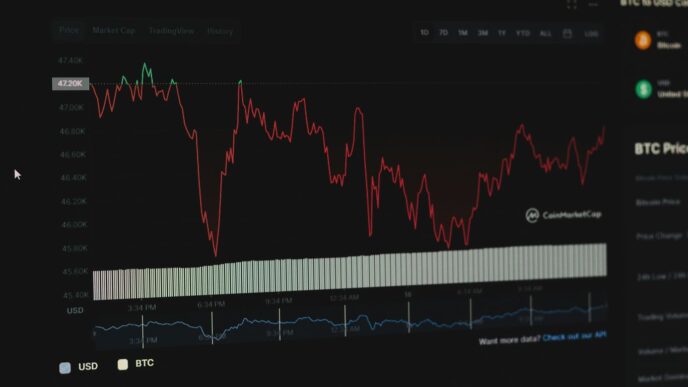There’s been a lot of talk lately about a potential merger between Quest Diagnostics and Labcorp. These two companies are huge players in the medical testing world, and if they join forces, it could really shake things up. We’re going to break down what that might mean for the industry, for patients, and for the companies themselves. It’s a big deal, so let’s get into the details of the quest labcorp merger.
Key Takeaways
- A Quest Labcorp merger would create a massive diagnostic company, potentially changing the competitive landscape significantly.
- Combining operations could lead to cost savings through shared resources and streamlined processes, but also raises questions about reduced competition.
- The merged entity might expand its global reach, especially in Europe, by combining Labcorp’s international presence with Quest’s domestic strengths.
- Innovation in specialty testing, like next-generation sequencing, could accelerate with combined research and development efforts.
- Patients and healthcare providers will be watching closely to see how a merger impacts service quality, accessibility, and pricing.
Analyzing The Quest Labcorp Merger Landscape
Okay, so let’s talk about what’s happening in the world of diagnostic labs. It feels like every other week there’s news about big companies buying up smaller ones, or even merging with each other. Quest Diagnostics and Labcorp are two of the biggest players out there, and the idea of them joining forces? That’s a pretty massive thought. It could really shake things up.
Understanding The Current Diagnostic Market
The diagnostic testing market is huge, and it’s always changing. You’ve got these giant companies like Labcorp and Quest, then you have regional labs, and even hospital systems doing their own testing. It’s a complex web. Recently, we’ve seen a lot of consolidation. For instance, Quest has been busy buying up lab assets from hospital systems like OhioHealth. Labcorp has also been making moves, like acquiring BioReference Health’s patient service centers and contracts. These kinds of deals show that the big players are looking to grow, often by picking up pieces of other businesses. It’s not just about getting bigger; it’s about getting smarter and more efficient in how they operate.
Historical Precedents In Lab Mergers
This isn’t exactly new territory for the lab industry. We’ve seen mergers and acquisitions happen before. Think about what happened with SYNLAB in Europe. Private equity firm Cinven bought them, then merged them with another company they owned, Labco. Later, Cinven took SYNLAB public, and then bought it back to take it private again. Labcorp even recently bought a stake in SYNLAB. These moves show a pattern of companies trying to gain market share or expand their reach, sometimes through complex financial maneuvers. It’s a way to consolidate power and resources in a competitive field.
Regulatory Hurdles For A Quest Labcorp Merger
Now, if Quest and Labcorp were to actually merge, that would be a whole different ballgame. You can bet the government would be watching that very closely. Regulators would want to make sure that such a massive company wouldn’t stifle competition or start charging way more for tests. They’d look at things like:
- Market Share: How much of the diagnostic testing market would this combined company control?
- Antitrust Concerns: Would this merger create a monopoly or near-monopoly in certain areas?
- Impact on Pricing: Could patients and healthcare providers end up paying more for essential lab services?
Getting approval for a merger of this size would likely be a long and complicated process, involving a lot of scrutiny from various government agencies.
Potential Synergies And Operational Efficiencies

When two big players like Quest and Labcorp consider joining forces, the talk quickly turns to how they can make things run smoother and save some cash. It’s not just about getting bigger; it’s about getting smarter with how they operate.
Consolidating Laboratory Networks
Imagine all those labs scattered around. A merger would likely mean looking at which ones are close to each other or serve similar areas. The idea is to combine these, maybe closing some and expanding others, to create more efficient hubs. This could mean fewer duplicate machines and staff in one neighborhood, and more streamlined workflows in a central location. Think of it like tidying up a messy garage – you group similar tools and get rid of what you don’t need.
- Reducing Overlapping Facilities: Identifying labs in close geographic proximity that can be consolidated.
- Optimizing Equipment Utilization: Ensuring high-value diagnostic equipment is used more frequently across a larger patient base.
- Standardizing Lab Processes: Implementing consistent testing protocols and quality control measures across all merged facilities.
Streamlining Supply Chains And Procurement
Running labs means buying a lot of stuff – test kits, chemicals, equipment parts. When you have two separate companies doing this, they might be buying the same things but not always getting the best prices because they’re smaller buyers individually. A combined giant could negotiate much better deals with suppliers. This means buying in bulk and getting discounts that weren’t possible before. It’s like going from buying groceries for one family to buying for a whole school – the cost per item usually drops.
- Bulk Purchasing Power: Negotiating lower prices for reagents, consumables, and equipment due to increased order volumes.
- Centralized Inventory Management: Reducing waste and stockouts by managing inventory across fewer, larger distribution points.
- Supplier Consolidation: Streamlining the number of vendors used, leading to simpler contract management and potentially better relationships.
Leveraging Combined Technological Capabilities
Both Quest and Labcorp have invested in technology, from automated testing platforms to data management systems. A merger offers a chance to pick the best of both worlds. They could integrate advanced automation from one company with the sophisticated data analytics from the other. This fusion of technology could lead to faster turnaround times for test results and more accurate diagnoses. It also opens doors for developing new types of tests or improving existing ones by combining research and development efforts. It’s like taking the best features from two different smartphones and building the ultimate device.
Impact On Market Competition And Pricing
So, what happens when two big players like Quest and Labcorp potentially join forces? It’s a question that has a lot of people in the diagnostics world talking, and for good reason. When you combine two giants, the competitive landscape definitely shifts, and that can ripple out to affect pricing and how smaller labs operate.
Reduced Competition In Key Markets
When Quest and Labcorp merge, they’d instantly become an even more dominant force. Think about it: they already have a huge footprint across the country. Combining their labs and patient service centers means fewer independent options for consumers and healthcare providers in certain areas. This consolidation could lead to a situation where there are only a handful of major diagnostic providers left standing in many regions. This isn’t necessarily a bad thing for the companies involved, but it does mean less choice for everyone else.
Potential For Price Adjustments
With less competition, there’s always the question of pricing. When a market becomes more concentrated, companies sometimes have more room to adjust their prices. It’s not a guarantee that prices will go up, but it’s a possibility that needs to be considered. The combined entity might find efficiencies that allow them to keep prices stable, or they might see an opportunity to increase them, especially for certain specialized tests where they might hold a near-monopoly.
Competitive Responses From Smaller Players
Smaller labs and regional providers will likely feel the pressure. They might need to find ways to differentiate themselves, perhaps by focusing on niche testing, offering more personalized service, or partnering with local healthcare systems. Some might even look to merge themselves to gain more scale. It’s a tough environment, and this merger would certainly make things more challenging for the smaller outfits trying to compete.
Here’s a quick look at how the market share might shake out in certain areas:
| Region | Pre-Merger Market Share (Est.) | Post-Merger Market Share (Est.) |
|---|---|---|
| Northeast | Quest: 30%, Labcorp: 25% | Combined: 55% |
| Midwest | Quest: 25%, Labcorp: 20% | Combined: 45% |
| South | Quest: 20%, Labcorp: 35% | Combined: 55% |
| West | Quest: 35%, Labcorp: 15% | Combined: 50% |
Geographic Expansion And Global Reach
Labcorp’s International Footprint
Labcorp already has a pretty big presence outside the U.S., showing up in about 100 countries. They’ve got labs in places like the UK and across the EU, plus Singapore and China. They even have central labs in Shanghai, Singapore, and Geneva. They also do kit production in Belgium and China, and have a lab in Japan with a local company called BML. It seems like they’re already set up in a lot of key spots around the world.
Quest’s Domestic Strengths
Quest, on the other hand, has historically been more focused on the U.S. market. While they do have some international operations, their main game has been here at home. They’ve been busy buying up hospital outreach businesses within the States, which shows they’re really trying to solidify their position across the country. Think about their recent deal with OhioHealth – that’s all about grabbing more local market share.
Opportunities In Emerging Markets
A merger could really shake things up when it comes to global reach. Labcorp’s existing international network, combined with Quest’s domestic strength, could create a powerhouse. Imagine combining Labcorp’s European connections with Quest’s U.S. infrastructure – that’s a huge step.
- Europe: Labcorp recently took a stake in SYNLAB, a big European lab company. This could be a way to test the waters and see if they can bring their specialized tests to more European patients. It’s a financial investment for now, but it opens doors.
- Asia: With labs in China and Japan, there’s potential to grow even more in these rapidly developing markets. Think about the demand for advanced diagnostics in places with large populations.
- Other Regions: There might be chances to expand into other areas where diagnostic testing is growing, perhaps in parts of South America or Africa, building on any existing presence either company might have.
Innovation And Specialty Test Offerings
When you think about big diagnostic companies like Quest and Labcorp, it’s easy to just picture routine blood draws and standard tests. But a lot of their future growth, and frankly, their competitive edge, comes from pushing the boundaries with new and specialized testing. This is where things get really interesting.
Integrating Advanced Diagnostic Platforms
Both Quest and Labcorp have been investing in and acquiring capabilities around advanced platforms. Think about things like next-generation sequencing (NGS) or complex genomic testing. These aren’t your everyday tests; they require specialized equipment, highly trained staff, and sophisticated data analysis. A merger could mean combining these advanced platforms, potentially leading to a more robust offering. For example, Labcorp has been pushing its OmniSeq INSIGHT, a 523-gene NGS panel for cancer. If they merge with Quest, which also has its own suite of advanced tests, they could create a powerhouse in precision oncology testing. It’s about bringing together the best tech and making it available more widely.
Expanding Access To Specialized Testing
Right now, access to highly specialized tests can be a bit of a lottery. It often depends on where you live, what hospital you go to, or if your doctor is connected to a specific lab network. A combined Quest-Labcorp could really change that. Imagine a scenario where a patient in a smaller town, who previously wouldn’t have had easy access to, say, a rare genetic disorder test, can now get it through their local clinic because the larger company has the infrastructure to support it. This could mean:
- Broader geographic reach: Using existing networks to distribute specialized tests further afield.
- Streamlined logistics: Getting samples to the right specialized labs more efficiently.
- Partnerships with research institutions: Collaborating to bring cutting-edge research tests into clinical practice faster.
The Role Of Next-Generation Sequencing
Next-generation sequencing is a big deal, especially in areas like oncology and rare disease diagnosis. It allows for a much deeper look at genetic material than older methods. Labcorp, for instance, has been active in this space with tests like OmniSeq INSIGHT. If they merge with Quest, they could potentially combine their NGS capabilities, perhaps creating a more comprehensive menu of genomic tests. This could lead to:
- More complete tumor profiling: Helping oncologists choose the best treatment for cancer patients.
- Faster diagnosis of rare genetic conditions: Giving patients and families answers sooner.
- Development of new diagnostic markers: Identifying new ways to detect or monitor diseases.
Ultimately, a merger could accelerate the adoption of these advanced technologies, making them more accessible and affordable for a wider patient population. It’s not just about doing more tests; it’s about doing more advanced tests and making sure people can actually get them when they need them.
Financial Implications Of A Quest Labcorp Merger
So, what does all this potential merging mean for the money side of things? When two big players like Quest and Labcorp consider joining forces, it’s not just about combining labs; it’s about how they plan to make and save money.
Projected Revenue Growth And Cost Savings
The big hope with a merger like this is that the combined company can bring in more money and spend less. Think about it – fewer duplicate administrative roles, maybe some shared IT systems, and a stronger negotiating position with suppliers. They’ll likely be looking at ways to cut down on operational costs across the board. On the revenue side, a larger footprint could mean reaching more patients and offering a wider array of tests, which could boost sales. It’s a balancing act, trying to grow the top line while trimming the bottom line.
Impact On Shareholder Value
For folks who own stock in either company, a merger can be a mixed bag initially. There’s often a period of uncertainty as the market digests the news. Sometimes, stock prices might dip a bit right after an announcement, like what happened with Labcorp’s stake in SYNLAB. But the long-term goal is to create a more valuable company. If the synergies and cost savings pan out, and the new entity grows its market share and profitability, shareholder value could see a nice bump. It really depends on how well the integration goes and if the promised benefits actually show up.
Financing The Transaction
Big mergers don’t come cheap, obviously. The question is, how would Quest and Labcorp pay for it? They might use a mix of cash on hand, taking on new debt, or even issuing new stock. Each method has its own financial implications. Using debt means interest payments, while issuing stock can dilute the value for existing shareholders. The specific financing structure will be a key detail to watch, as it can significantly impact the combined company’s financial health and risk profile moving forward.
Customer And Patient Experience Considerations
Ensuring Seamless Transition For Patients
When two big players like Quest and Labcorp join forces, the biggest worry for folks needing lab work is how it’ll affect them. Will appointments be harder to get? Will the place they’ve always gone to suddenly close or change? It’s really about making sure that the day-to-day experience for patients doesn’t become a headache. Think about someone who needs regular blood tests for a chronic condition. They have a routine, a place they trust. A merger can shake that up. The companies will need a clear plan to tell people what’s changing, where they can go, and what to expect. This means clear communication, maybe even a dedicated hotline or website section just for patient questions during the transition. They’ll also need to make sure that the systems talking to each other – the ones that handle appointments, results, and billing – work smoothly from day one. Nobody wants their test results lost in the shuffle or getting a confusing bill because the old system and the new one aren’t playing nice.
Maintaining Service Quality
Beyond just keeping the doors open, the quality of the service has to stay high. This isn’t just about getting a blood draw; it’s about accuracy, timely results, and how staff interact with patients. A merger can put a strain on resources, at least temporarily. Staff might be worried about their jobs, and there could be changes in how things are done. The combined company needs to focus on keeping its people happy and well-trained. They should also look at what’s working well in both Quest and Labcorp’s current operations and try to adopt those best practices across the board. This could involve things like:
- Standardizing phlebotomy techniques to ensure consistency and patient comfort.
- Implementing new training programs for staff on updated protocols and customer service.
- Regularly surveying patients about their experience to catch any dips in quality early on.
It’s also about the little things. Are the waiting rooms clean? Is the staff friendly and helpful? These details matter a lot to people who might already be feeling stressed about their health.
Accessibility Of Services Post-Merger
One of the big questions is whether a merged giant will actually make lab services more or less accessible. On one hand, a larger network could mean more locations, especially in underserved areas. They might be able to offer more specialized tests that smaller labs can’t. But there’s also the risk that to cut costs, they might close down smaller, less profitable clinics. This could be a real problem for people in rural areas or those who don’t have easy transportation. The companies will need to carefully study their current footprint and figure out where consolidation makes sense without cutting off access for key patient groups. They should also think about how they can use technology to help. Maybe expanding telehealth options for consultations or making it easier to schedule appointments online could help bridge any gaps. Ultimately, the goal should be to make getting necessary lab tests as easy and convenient as possible for everyone, no matter where they live.
Wrapping It Up
So, what does all this mean for the world of medical testing? If Quest and Labcorp were to join forces, it would create a really massive company. We’ve seen Labcorp making moves in Europe with SYNLAB and buying up other assets, while Quest has also been busy acquiring hospital lab services. It’s clear both companies are looking to grow. A merger would likely mean fewer choices for some services, and it’s worth watching how prices and accessibility might change for patients and doctors. The long-term effects are still a bit fuzzy, but one thing’s for sure: the diagnostics industry is changing fast, and a combined giant would definitely shake things up.














